I am delaying my post about the identification of another Coptic fragment in the Pennsylvania University Museum in order to publish Yavor Miltenov’s interesting report on a new Patristic project.
As a result of the work of generations of philologists, the researchers in the field of Byzantine studies have at hand numerous index-catalogues dealing with classification of texts. The most recent and significant of them are, of course, Clavis patrum Graecorum, Bibliotheca hagiographica Graeca, Clavis apocryphorum Veteri Testamenti, Clavis apocryphorum Novi Testamenti, and many others – a centuries-old tradition, that serves as a base for these exceptional reference books. Any study on (or even related to) certain medieval literary monuments must as a rule consult them, as they cover an enormous material, facilitate identifications of certain works, offer standardization, unification and classification, contain the primary bibliography, and represent not only the basics of our knowledge about one particular text, but also give an opportunity to study groups of texts and corpora. Recently, the intensive research has even brought the process to further development – an online Clavis Clavium will be built upon the base of previous indexes[1].
It is a well-known fact, that almost all medieval Slavic literary monuments (9th–16th c.) are translations from Byzantine works: whole miscellanies, single texts, excerpts used in compilations. In this sense, their adequate study is possible only if a comparison with the Byzantine originals is made. In Slavic medieval studies, however, there is no such instrumentum studiorum that contains a) classification of the translated texts and b) reference to their Greek originals[2]. For this main reason the Slavic tradition, unlike the Armenian, Georgian, Arabic, Coptic, is not “visible” to the researchers of the Byzantine cultural commonwealth, it is not fully reflected in the above-mentioned and other Claves[3], and, finally, remains isolated and thought more as a subject to be researched by the “national philologies”, than as a full member of the Byzantine-Slavic cultural space in the Middle Ages.
In 2011 the Bulgarian Science Fund announced a call for Young Scientists Program. I and four other colleagues decided to apply with a project entitled “Electronic database Operum patrum Graecorum versiones slavicae: cataloguing and study of the writings of John Chrysostom in Old Church Slavonic” with the kind institutional support of Central Library of Bulgarian Academy of Sciences. Surprisingly, we won a grant and the project has started in the beginning of 2012!
The aim of our initiative is to elaborate a freely accessible Internet-based electronic corpus of medieval Slavic translations and their corresponding Byzantine sources. I should admit that the inspiration of our idea is the Pinakes database, worked out by the Institut de recherche et d’histoire des textes on the base of a card-index, developed for two decades in the Pontifical Institute for Medieval Studies in Toronto. So we have the model, we have some sources we may use[4], we know it will take years to input sufficient material and much more time to make text identifications of our own. We have in mind also that we have almost no base to build upon: most of the descriptions of Slavic manuscripts lack identifications of texts’ Byzantine originals, we do not have Patrologiae or series of critical editions (such as Sources Chrétiennes, Corpus Christianorum, etc.), and we have no previous experience with medieval Slavic text databases that are similar to ours.
This is why, being still in the beginning, we have to think about technical solutions and scientific criteria which will last. Our Clavis has to be supplied with bibliographic and specialized data, to be user friendly, to include opportunities for expansion, permanent upgrade and publication of various types of materials (Greek and Old Church Slavonic works, manuscript catalogues, articles, books, iconographic images, etc.). In this sense it is important to prepare carefully the appropriate software and to build a model for texts description that has all the necessary metadata. We are working on these methodological issues now and I hope I’ll be able to tell you more about the development of the project soon, here on Alin’s blog.
Dr. Yavor Miltenov
Institute for Bulgarian Language and Central Library of Bulgarian Academy of Sciences
Sofia, Bulgaria
[1] As announced by Caroline Macé and Gert Partoens from the Katholieke Universiteit Leuven at a recent meeting in Sofia.
[2] There are some exceptions though, the most of recent of them are Kl. Ivanova’s Bibliotheca Hagiographica Balcano-Slavica, Марин Дринов, София, 2008 and O.V.Tvorogov’s Переводные жития в русской книжности XI—XV веков. Каталог. Москва – Санкт-Петербург, Альянс-Архео, 2008. Valuable information about the Greek sources of some Slavic translations could be found in small number of manuscript catalogues, elaborated in Russia before 1917. After that there is a huge gap and investigations resumed only 60-70 years later.
[3] In M. Geerard’s Clavis patrum Graecorum most of the Slavic versions mentioned are those included in the so-called Great Menaia, compilated by the Russian metropolitan Macarius in the mid-16th c. All these are classified as versio palaeo-rossica, but most of them are in fact translations from 10th-14th c. and come from Bulgaria. Halkin’s Bibliotheca hagiographica Graeca contains no data about Slavic versions. As concerns the apocrypha, much work is still to be done after A. de Santos-Otero’s Die Handschriftlische Uberlieferung der altslavischen Apokryphen. De Gruyter, B. I. Berlin — New York 1978; II. Berlin — New York 1981 (see Fr. Thomson’s critical remarks in The Slavonic and East European Review, 58, 1980, 256-268; 63, 1985, 73-98.
[4] One of the main sources of such a project should be F. J. Thomson’s handwritten card-index, kept now (as far as I know) in Antwerp, Belgium. On this see Thomson F. J., A Guide to Slavonic Translations from Greek down to the End of the XIVth Century. In: Славянска палеография и дипломатика. София, 1980, 27-36. Professor Thomson’s publications contain a lot of fractions of this enormous corpus, see for example his The Reception of Byzantine Culture in Mediaeval Russia. Variorum Collected Studies Series. Ashgate, Aldershot, 1999.










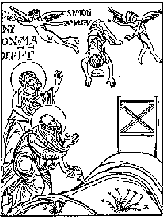




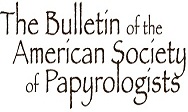
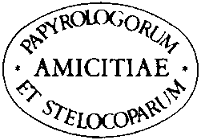
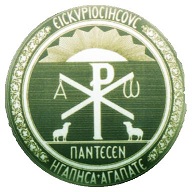





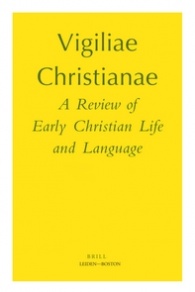






Pingback: at Roger Pearse
Pingback: The Website of the Versiones Slavicae Project. Corpus of Medieval Slavonic Translations and Their Greek Sources | Alin Suciu
Greetings, My name is Viacheslav Lytvynenko and I am a Greek patristic scholar. I have tried to find a contact for Yavor Miltenov to ask him for more details concerning the Versiones Slavicae Project, but with no success. So, I was wondering if you might be able to supply me with an email to write him?
Viacheslav found me, and anyone interested in Versiones slavicae project may message our team here: versiones.slavicae@gmail.com.
Thanks, Alin, for hosting this guest post 🙂